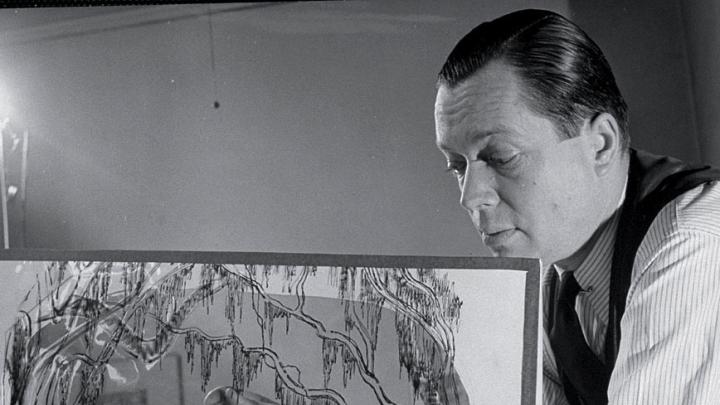History catalogs failure far less frequently than success—and sometimes, says assistant professor of English Derek Miller, that is a mistake. Miller, who studies theatrical history, is engaged in an experimental project he calls Visualizing Broadway that uses data about Broadway shows—some of which rank among the world’s most economically successful cultural juggernauts—to suggest new and better approaches to the study of theater. For example, “We tend to teach successes, for good reasons,” he points out, “but most of the work that gets made is a failure”—both economically and, by extension, artistically, in the sense that it “doesn’t get seen and reproduced.”
Miller argues that the traditional focus on success may make sense in other literary genres, but in the performing arts, “You can’t distinguish process from product.” This makes failures far more meaningful. “Every show on Broadway has had the same number of weeks of rehearsal, more or less, the same investment of people’s time and energy, more or less, no matter whether it runs for 15 years or…a day,” he says. “And if the primary work of creativity happens in the rehearsal and for those first few performances, before the people who make the work settle into a pattern of delivering a product to an audience over a long period, then the failures matter just as much as the successes—and we have really crowded failures out of our histories.”
At the heart of Visualizing Broadway is a database that includes virtually every musical and play that has appeared there since 1900. Included are authors and directors, writers and producers, actors and actresses, set designers, press agents, orchestrators, and music directors. Miller has compiled data on run length, number of roles, long-term shifts in opening dates, networks of people involved in production, and changes in average ticket prices, among many other kinds of industry information.
What stories do the data tell? In English 144a, “American Plays and Musicals, 1940-1960,” which he taught in the spring terms of 2014 and 2015, Miller asked if his students had ever heard of Jo Mielziner. Most hadn’t. But a visualization of mid-century Broadway professional networks shows the set and light designer as more connected to other people working on Broadway than virtually anyone else. “Everyone knew him,” says Miller. Nominated for 12 Tony Awards and the winner of seven, “he designed, back to back” vastly different megahits: the play Death of a Salesman and the musical South Pacific. More than any actor or playwright, Miller asserts, people like Mielziner, “working on show after show, set the tone for what it meant to be a professional creator, and defined what good work should look like.”
Academic study of theater history often treats plays and musicals separately, even though “Jo Mielziner’s design for South Pacific isn’t an isolated form that came out of nowhere.” Given Mielziner’s backstage role in those two major productions—which “share a lot in common in terms of the way they flow in and out of different worlds, moving particularly fluidly between big set pieces and forestage crossover scenes”—and the fact that they appeared on Broadway at the same time, writing about them together might make sense, but Miller says no one does. Broadening the range of such comparative studies is one aim of the Visualizing Broadway project.
Miller’s data-centric approach to theater history has led to other kinds of insights, too. “We are not used to thinking about periods of growth or decline or relative stability,” he says, yet the traditional focus of theater historians on specific decades, such as “Broadway in the ’40s,” might make less sense than a study keyed to periods of expansion or contraction in the industry that become visible through the data.
At shorter time-scales, Miller’s work shows that the Tony Awards have led to a compression of the theater season. An increasing number of productions open in April, right before nominations for the award are announced. That means more and more rehearsals take place in February, he explains, intensifying an already fierce competition for theater space, actors, producers, set designers, musicians, and other scarce resources. His data also reveal that run lengths have increased dramatically over time, hand in hand with the well-documented rise of mega-musicals. Successful productions such as Cats and Phantom of the Opera absorb a lot of resources—but from an industry perspective, he points out, they also represent stability.
Miller sees Visualizing Broadway leading primarily to better questions, rather than to answers alone. That perspective might foster new chronological periods to analyze; a reconsideration of who really were the creative forces in the industry; research on how the allocation of scarce resources interacts with aesthetic judgments; and studies of the ways in which shows that end in commercial failure nevertheless represent a large part of the Broadway experience gained by collaborating artists, actors, designers, producers, and orchestrators who put them on. By showing how the creative process takes place within the context of an industry, Miller hopes his data motivate a rethinking of some of the fundamental assumptions of traditional theater history.









